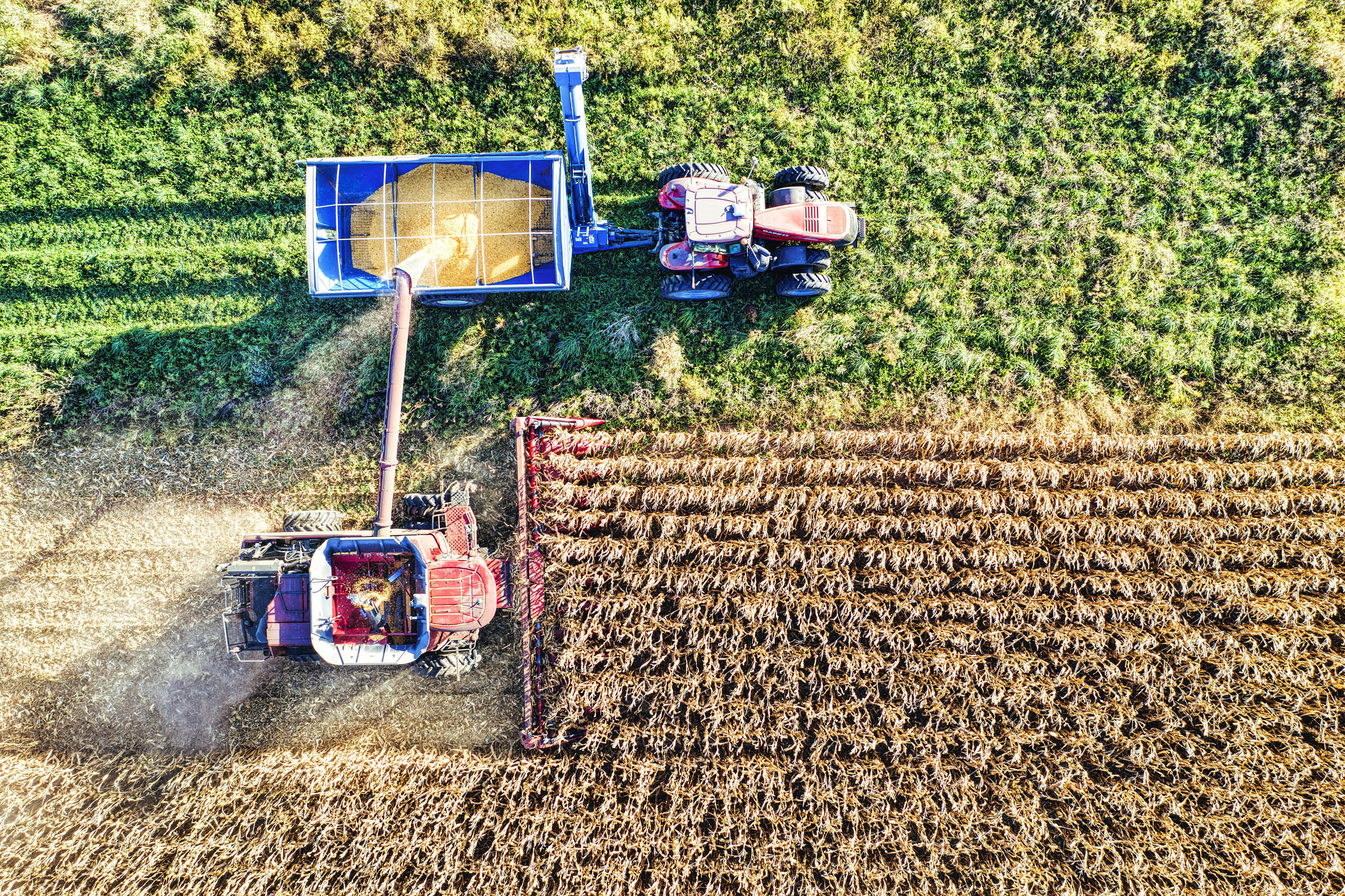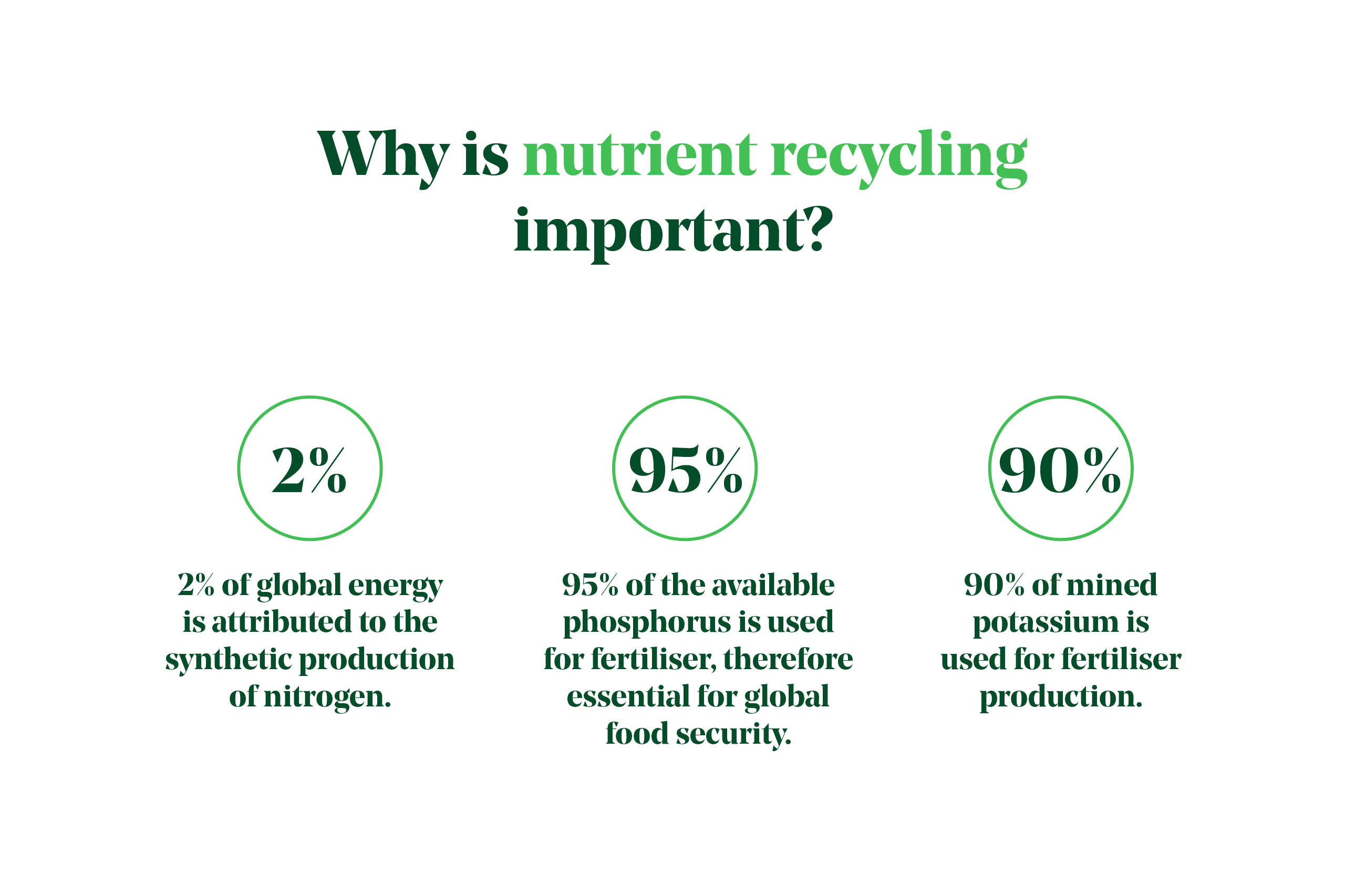- Past Event: 23rd Nov 2023
- Industry Insights
Exploring Alternatives to Synthetic Fertilisers with Nutrient Recovery

The agricultural sector stands at a crucial crossroads as it grapples with the environmental and economic challenges posed by the excessive use of synthetic fertilisers. While manufactured fertiliser is an essential input required to deliver crop yield and quality, the carbon footprint attributed to its production and application equates to approximately 5% of total global greenhouse gases (GHGs). Mitigating climate change while avoiding risks to food security is therefore a challenging endeavour that requires fast and scalable solutions. In recent years, there has been a growing realisation that alternative approaches, particularly those emphasising nutrient recovery, are essential for sustainable farming practices.
The downside to synthetic fertilisers
Synthetic fertilisers, while initially boosting crop yields, come with a host of detrimental effects. These fertilisers contribute to soil degradation, water pollution and significant greenhouse gas emissions (GHGs). The excessive use of nitrogen-based fertilisers, in particular, leads to nutrient run-off, causing harm to aquatic ecosystems and contributing to the formation of dead zones. Additionally, the high energy requirements for manufacturing synthetic fertilisers contribute to the sectors carbon footprint.
The urgency of change
Given the environmental consequences associated with synthetic fertilisers, there is an urgent need to explore sustainable alternatives. Nutrient recovery, a process that captures and recycles nutrients from organic waste, such as agricultural slurry and digestate, presents a promising solution. This approach not only addresses the issues related to synthetic fertilisers but also supports a circular economy by reusing valuable nutrients.
The advantages of nutrient recovery
Reduced Environmental Impact: Nutrient recovery systems significantly reduce nutrient run-off, minimising the pollution of water bodies and preserving aquatic ecosystems.
Circular Economy: By extracting nutrients from organic waste, nutrient recovery systems turn waste products into valuable resources for agriculture.
Improved Soil Health: Organic nutrients obtained through recovery processes enhance soil structure and microbial activity, promoting overall soil health and fertility, supporting healthier crops and sustainable farming practises.
Energy Efficiency: Compared to the energy-intensive production of synthetic fertiliser, nutrient recovery is often more energy-efficient, contributing to a lower carbon footprint.
Cost-effective: Nutrient recovery systems can offer long-term cost savings as they reduce the dependence on expensive synthetic fertilisers.
 H2OPE for the future
H2OPE for the future
The agricultural sectors exploration of alternatives to synthetic fertiliser, with a focus on nutrient recovery, is not just a choice but a necessity for the future of sustainable farming. By embracing innovations, farmers can enhance crop yields, protect the environment and contribute to the long-term sustainability of agriculture.
SEM’s solution, H2OPE, is designed to address the challenges surrounding manufactured fertiliser by harnessing nutrients from agricultural slurry and digestate to create a natural alternative. The on-site solution helps to revolutionise farming businesses waste management strategies while simultaneously and significantly reducing carbon emissions by 1.6 tonnes for every tonne of fertiliser produced*.
A transition to a sustainable agricultural sector, exemplified by innovative solutions like SEM’s nutrient recovery technology, holds the promise of a global impact, fostering environmental resilience, ensuring food security, and mitigating the far-reaching consequences of unsustainable farming practices on a global scale.